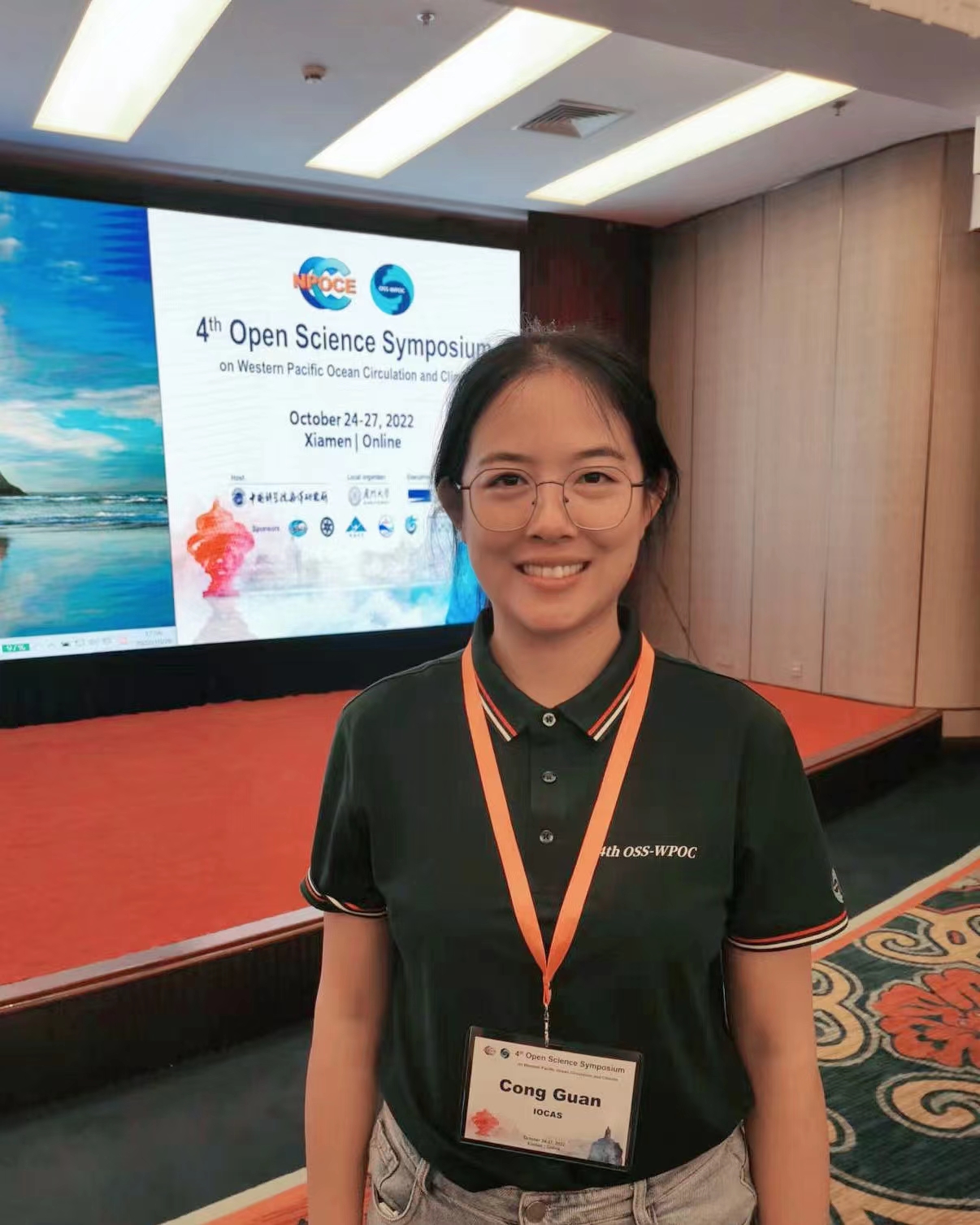(Text by GUAN Cong, congguan@qdio.ac.cn)

Cong was attending the OSS interannual conference. Credit: Institute of Oceanology, Chinese Academy of Sciences
The El Nino-Southern Oscillation (ENSO) is the strongest year-to-year climate variability in the planet. When its warm phase El Nino or cold phase La Nina happens, it brings great impacts on global climate system, and hence affects air temperature and precipitation conditions in China. For example, the well-known 1998 flood in south China is closely related to the 1997-1998 super El Nino.
Could we be able to make good prediction on ENSO events? Yes, but still not so good, due to its complexity characters including El Nino-La Nina asymmetry, El Nino diversity, extreme events and also its variations under climate change. Understanding its complexity characters and underlying mechanisms is one of the most essential and hot topic in the climate and oceanography field.
Since my junior year in Ocean University of China, I have developed a great interest in ENSO. Later, I studied ocean circulation dynamics especially in the tropical Pacific Ocean, advised by Prof. WANG Fan in University of Chinese Academy of Sciences, then I conducted a joint-educate PhD program in NOAA/PMEL advised by Michael McPhaden and worked on roles of ocean feedbacks in ENSO complexity. Air-sea dynamical feedbacks determine the developing and decaying ENSO temperature variations, including thermocline feedback, zonal advective feedback, thermal damping and so on. By establishing temperature variance budget, we revealed the dominate role of thermocline feedback in the 21st century shift of ENSO variability and El Nino-La Nina asymmetry in their decaying phases, and also WWBs-induced Ekman feedback in generating 2015-2016 extreme El Nino.
Despite of classical air-sea feedbacks in ENSO events, salinity has been suggested to play active roles in the development of ENSO events by affecting vertical stratification. As a physical oceanography researcher in the Institute of Oceanology of the Chinese Academy of Sciences (IOCAS), my recent studies are focused on salinity effects in ENSO complexity. Combined with observational data and model experiments, we found that salinity anomalies in the central equatorial Pacific is more effective in strengthening ENSO SST variability, via its modulation on vertical entrainment and mixing process.
Specifically, 1) salinity anomalies in the central Pacific contribute to stronger warming during El Nino while those in the west lead to relatively weaker cooling during La Nina, which strengthens the sea surface temperature asymmetry between El Nino and La Nina. 2) central Pacific-salinity anomalies located in the central Pacific during EP El Nino and west-located SSS anomalies during CP El Nino, strength the SST difference between the CP/EP El Nino by 11%.
Ocean acts like an air conditioner for global climate system, and so does for ENSO variability. Our studies on ENSO complexity from a perspective of salinity effects provides new insight, which may be helpful for interpreting more complex model simulations and for and predicting ENSO variations.
(Editor: ZHANG Yiyi)

